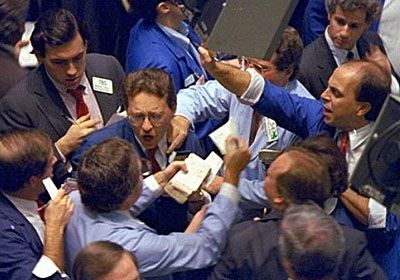The Cost of the Crisis
The forcing of a debt-ceiling crisis seems likely to have permanent consequences, even if it is settled before Default Day, reports Bloomberg News:
Conviction that lawmakers will fail sent rates on bills due next month to the highest level since March 31, data compiled by Bloomberg show.
“The politicians should learn from this that they shouldn’t wait until we have our backs against the wall,” Donald Selkin, New York-based chief market strategist at National Securities Corp., said in a telephone interview. Selkin, a 35-year Wall Street veteran, helps manage about $3 billion. “It’s very irresponsible because it can affect the economy and jobs. They’re putting us in a situation where we could have another financial meltdown.”
This artificial crisis did not need to happen. But having happened, bond investors must worry: Will it recur? What other showdowns can they expect?
For us, the issue is not the debt limit -- it’s the underlying fiscal dynamics,” said [David] Beers, who has been rating governments for [S&P] for 20 years. “It’s not obvious to us that this political divide that is proving so difficult to bridge is going to be any more bridgeable three months from now or six months from now or a year from now.”
Does that mean that all politicians should unite to start hacking away at government spending immediately? Not so fast.
While yields on 10-year notes suggest bond investors don’t expect a default, government efforts to prevent one by reducing spending could still harm the economy, according to Anthony Valeri, market strategist in San Diego at LPL Financial, which oversees $340 billion.
What does the bond market want? A budget deal now, an end to attempts to force policy change by threatening default, followed by a gradual path toward budget balance in the years to come. And if Washington - meaning, for all practical purposes, the House Republicans - does not produce what the bond market wants, the costs will be large:
A decision to cut the government’s credit rating would likely increase Treasury rates by 60 to 70 basis points over the “medium term,” raising the nation’s borrowing costs by $100 billion a year, Terry Belton, global head of fixed-income strategy at JPMorgan Chase & Co., said on a July 26 conference call hosted by the Securities Industry and Financial Markets Association. It could also hurt the rest of the economy by increasing the cost of mortgages, auto loans and other types of lending tied to the interest rates paid on Treasuries.
We could be living through, in short, the most expensive Tea Party in the history of the world.


